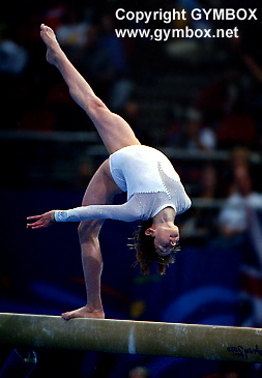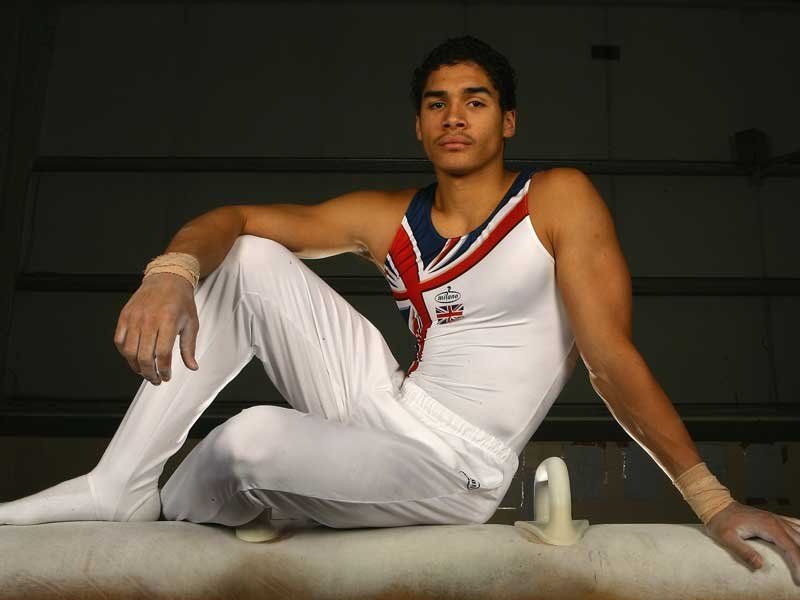In our earliest years of education, we learn a simple fact about stories: they have a beginning, a middle, and an end. Not one of these components can be singled out as the best, or the most important, with each having its own particular contributions.
In gymnastics, routines on two of the four apparatus follow the same rules. A mount begins a routine. Several skills follow, forming the middle section of the routine, and a gymnast ends with a dismount.
Based on classic storytelling rules, all three sections should be of equal importance when composing the routine. Why, then, have modern routines of bars and beam come to resemble an optional middle and a compulsory start and finish? This is obviously an exaggeration, but it is undeniable that interesting mounts and varied dismounts have quickly become a thing of the past.
Uneven Bars
To my knowledge, not a single competitor in a world or Olympic level bars event final since (at least) 2000 has mounted with anything other than a glide kip on the low bar, jump to high bar or a vault with hand repulsion to the high bar (be this straight or straddled) - but I would be happily corrected if I am mistaken!
In fairness to modern competitors, mounting the uneven bars was never a particularly noticeable hotbed of ingenuity. There was, however, some variation and certainly a great deal more than there is today. Even the simple half turn into kip on the low bar made a pleasant change to the norm (as competed most memorably in my mind by Tatiana Lyssenko, but also by many others including Lavinia Milosovici).
There were or course those who really took it to the next level with their bars mounts. My personal favourite for irregularity and difficulty is the fantastic Olesia Dudnik, whose roundoff Arabian somersault to hang on high bar really makes those used to modern bar routines look twice.
To my mind, the last top level gymnast competing a bars mount that could genuinely be considered interesting was Elena Zamolodchikova, with her roundoff to flip full turn to handstand on the lowbar. Even this was shortlived and often badly performed, though.
However, as I mentioned earlier, there were never really that many bars mounts around to start with (relative to other skill types). Therefore it is pretty forgivable if a little disappointing that we never see anything beyond what has become the norm. Less understandable, though, are the dismounts.
Although uneven bars dismounts are more varied than the above, they are still pretty stagnated. It generally comes as a shock at the end of a routine if the dismount isn’t any of the big three: the full twisting double tuck, the double layout or the double front. To my knowledge, no event final competitor in the new millennium has dismounted with anything other than a double somersault variation from a forwards/backwards giant.
This is such a shame when we consider the beautiful possibilities that exist out there! For a start, twisting dismounts are almost never seen and they can be gorgeous. I would love to see a triple twisting layout at the end of a bar routine (I always thought Yang Yilin would have been perfect for this).
I imagine with skills like this, norms of coaching are a problem. Perhaps it seems less worth training a twisting dismount when the techniques learned can be applied to little else (learning a double back off the bars can be modified into a whole host of skills). Maybe, though, it is just force of habit that causes these dismounts to be left languishing in the shadows.
At least when something was never popular, one doesn’t have the problem of “missing” it. This can be said somewhat for the twisters but sadly not for the toe on and hip circle dismounts of this world. The eighties brought us many of these, and they were allowed to live on through the much missed compulsory exercises. A personal favourite of mine is the underswing front tuck salto with a half twist. Here it is performed by Svetlana Khorkina in a rare example of a bars compulsory video by the superstar Russian (incidentally the whole routine is a favourite of mine, as I think it shows she DID have good technique on the bars beyond her own niche set of skills).
(Love seeing my favourite bar worker doing my favourite bar transfer. That's another story though)
Of course, this particular dismount and many like it are rated as C elements or less, and hence do not fulfil D dismount category of the code of points. I understand this rule as it necessitates the maintenance of difficulty throughout a routine (a paltry dismount at the end of a routine can be really disappointing: for example I really hated Elena Produnova's double pike dismount in 1997). It is a shame however that some sort of originality bonus cannot be worked into the code, allowing us to see a greater variation of dismounts.
But not all of these types of dismounts are low rated: the super cool “Ma” is an F (A hip circle hecht with full turn to salto backwards - nice).
Beam
Since the code change, many gymnasts mount the beam as if they are getting on a bus. Thankfully, there are still many gymnasts who begin a routine with an exciting, acrobatic skill. Alicia Sacramone has been front piking for years now, and while I was never fond of the attempted connection to back tuck it certainly begins the routine with a bang (or on occasion, a bang and a crash...but hey, that was 4 years ago).
In terms of interesting and artistic mounts, Lauren Mitchell’s cartwheel to chest roll is pretty original (and it was nice to see Shawn is using it too, making a great change from her 2008 borefest). For others, though, one finds oneself having to look back until at least the last Olympics where we saw a few nice press to handstand variations, such as Nastia’s beautiful start.
One thing I particularly miss is roundoff mounts. At one stage the roundoff LOSO mount was relatively common but we sadly get very few of these today. A personal favourite of mine was Khorkina’s roundoff BHS 1/1 mount directly into a flight series: linking an interesting mount straight into difficult on-the-beam work is unheard of these days.
Other favourites include Ivana Hong’s front handspring.
Looking to dismounts, I am bored to tears with an endless tirade of double pikes. An interesting point, though, is that there were just as many double tucks from the beam in years gone by and these were not nearly as irritating. The problem is this: the double pike is an E whereas the double tuck is a D. Therefore gymnasts obviously go for the former. This would be fine is everyone’s looked like Bridget Sloan’s, but sadly the vast majority end up as a messy, unstuck and knee eating catastrophe that quite frankly ruin a beam routine for me. I would rather take a stuck tucked double (like Lobaz’s beauty) any day of the week.
Love ya Bridge
In terms of dismount variation, it was lovely to see Casey Jo Magee bringing the swing through 2.5 twist back from the dead at this year’s visas.
Perhaps this is just the spoilt ramblings of someone who rarely gets to see their favourite skills, but maybe it is something bigger. I can't help but feel like we never see anything intriguing anymore, and in few areas is this as true as it is with mounts and dismounts.















